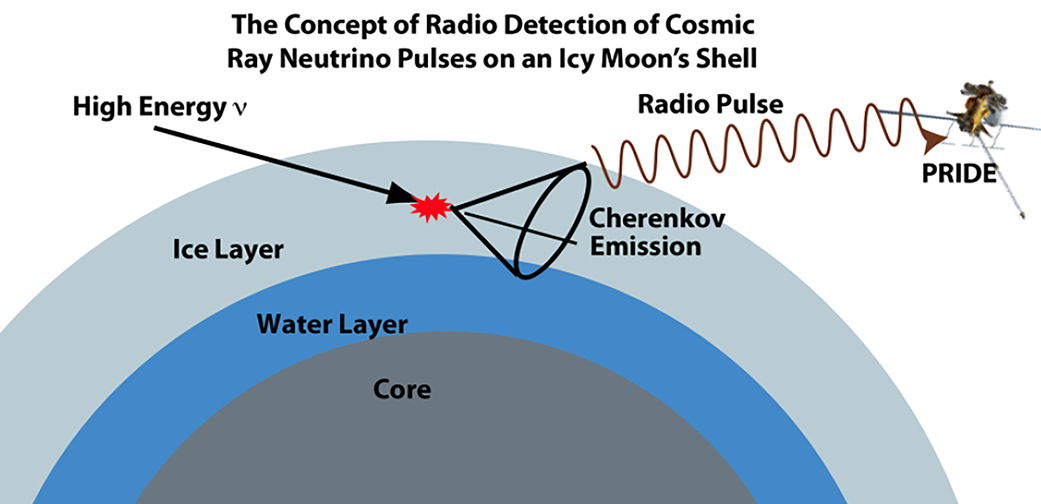Timothy Miller
Johns Hopkins University
Description
We propose to exploit a remarkable confluence between methods from the esoteric world of high energy particle physics and an application to delineate habitats suitable for life within the solar system. PRIDE (Passive Radio Ice Depth Experiment) is a concept for an innovative low cost, low power, low mass passive instrument to measure ice sheet thickness on outer planet moons, such as Europa, Ganymede, and Enceladus, some of which may harbor the possibility of life in under-ice oceans. The proposed instrument, which uses experimental techniques adapted from high energy physics, is a passive receiver of a naturally occurring signal generated by interactions of deep penetrating cosmic ray neutrinos. It could measure ice thickness directly,and at a significant savings to spacecraft resources. In addition to getting the global average ice thickness this instrument can beconfigured to make low resolution global maps of the ice shell. Such maps would be invaluable for understanding planetary features and finding the best places for future landers to explore. The approach and our findings so far are described in our paper in Icarus (Miller, et al., 2012, Icarus 220, 877–888). The basic idea is to use radio receiver technology to detect cosmic ray neutrinos passing through the ice sheet and generating Cerenkov radio pulses (the Askaryan effect). The rate and directional distribution of the detected neutrino interactions will depend upon the thickness of the observed ice sheet. This technology has previously been demonstrated on Antarctic balloon flights by the ANITA neutrino project. In this work we will extend the scope of our original investigation and explore in greater detail the possibility of making low resolution global maps of the ice shells – instead of simply getting a global average ice thickness. In addition, we will improve the fidelity of our initial simulation used to analyze the concept in several important areas in order to more precisely determine the final measurement capabilities of the instrument.































